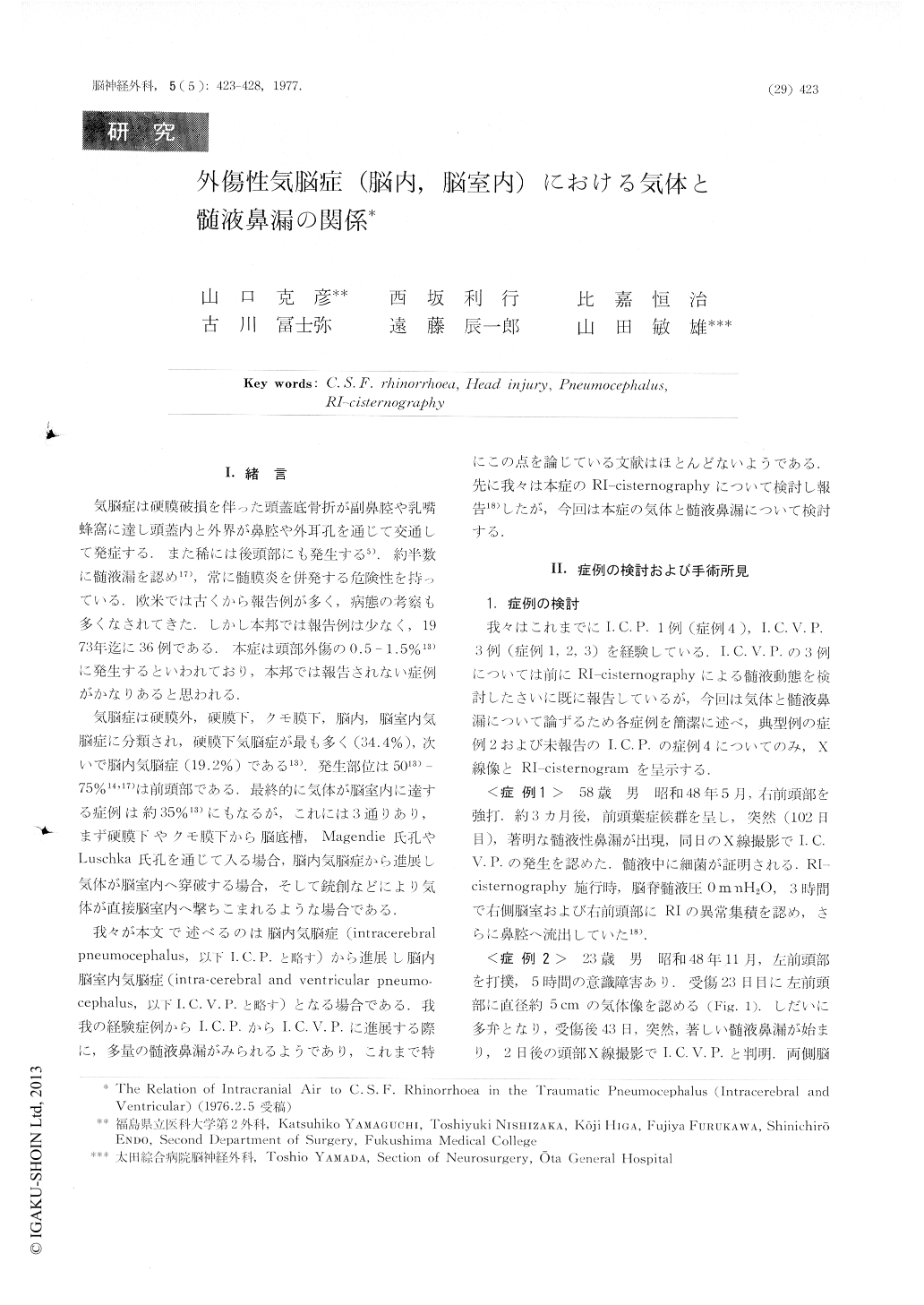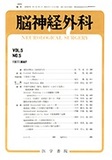Japanese
English
- 有料閲覧
- Abstract 文献概要
- 1ページ目 Look Inside
Ⅰ.緒言
気脳症は硬膜破損を伴った頭蓋底骨折が副鼻腔や乳嘴蜂窩に達し頭蓋内と外界が鼻腔や外耳孔を通じて交通して発症する.また稀には後頭部にも発生する5),約半数に髄液漏を認め17),常に髄膜炎を併発する危険性を持っている.欧米では古くから報告例が多く,病態の考察も多くなされてきた.しかし本邦では報告例は少なく,1973年迄に36例である,本症は頭部外傷の0.5-1.5%13)に発生するといわれており,本邦では報告されない症例がかなりあると思われる.
気脳症は硬膜外,硬膜下,クモ膜下,脳内,脳室内気脳症に分類され,硬膜下気脳症が最も多く(34.4%),次いで脳内気脳症(19,2%)である13),発生部位は5013)−75%14,17)は前頭部である.最終的に気体が脳室内に達する症例は約35%13)にもなるが.これには3通りあり,まず硬膜下やクモ膜下から脳底槽,Magendie氏孔やLuschka氏孔を通じて入る場合,脳内気脳症から進展し気体が脳室内へ穿破する場合,そして銃創などにより気体が直接脳室内へ撃ちこまれるような場合である.
The relation of intracranial air to C.S.F. rhinorrhoea in our four cases, one intracerebral and the others intracerebral-ventricular pneumocephalus, were investigated on their clinical course, operative findings and RI-cisternographic findings.
In the occurrence of the pneumocephalus, it seemed important for the damaged brain to herniate into the defect of the bone and dura matar.
Clinically in the stage of an intracerebral pneumocephalus, the C.S.F. rhinorrhoea was not recognized as a rule.

Copyright © 1977, Igaku-Shoin Ltd. All rights reserved.


